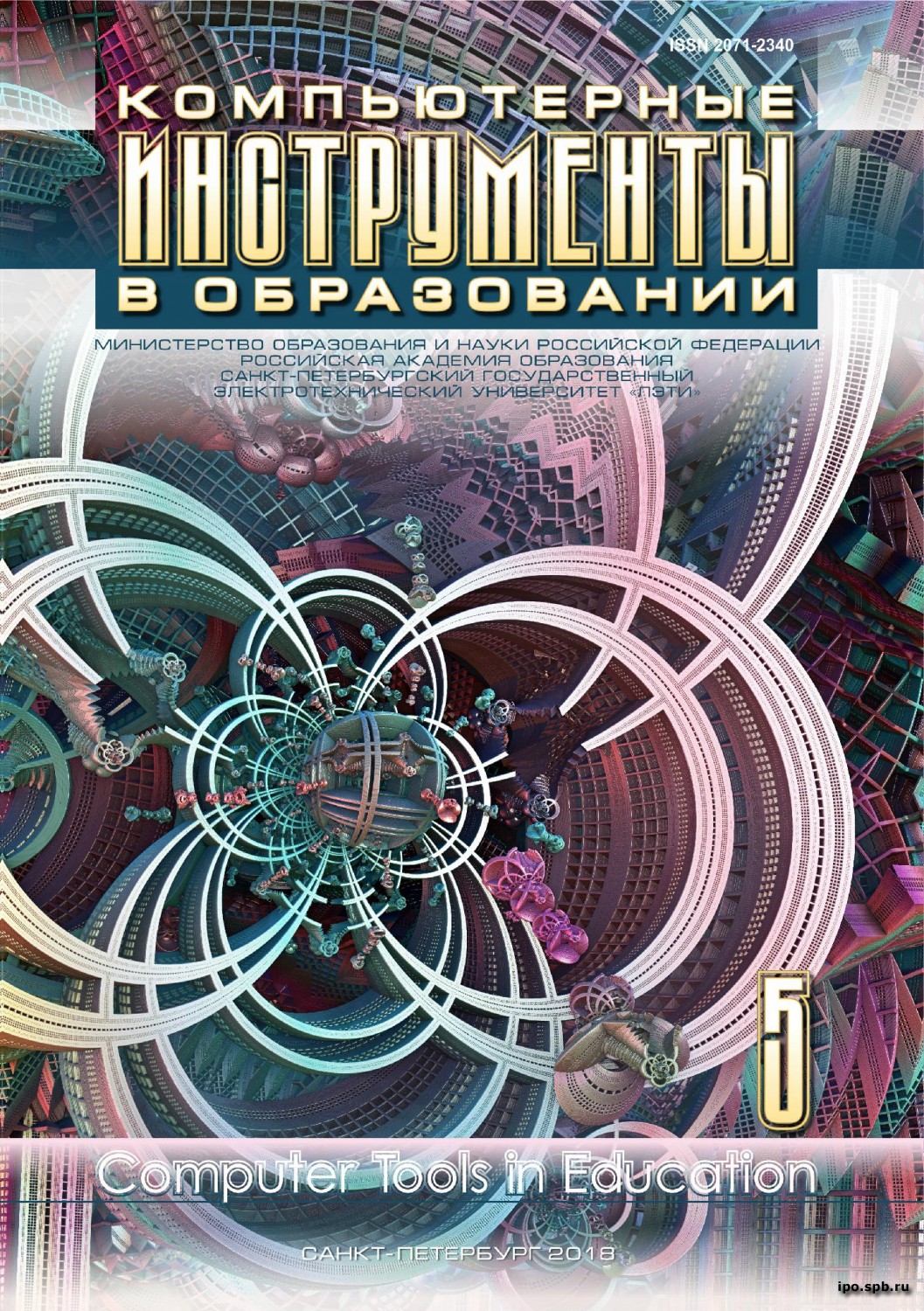Mahjongg Solitaire: a High-School Student Scientific Project, Containing Elements of Artificial Intelligence
Abstract
The project described in this article is intended to be performed by high school students (and possibly by undergraduate students as a term paper).
It is important to note that the implementation of the first part of the project (the computer program that solves the specific layout of the solitaire) is a very small part of the work proposed for implementation in this project. However, this part --- the creation of a computer program for solving a particular layout - is also a task related to artificial intelligence.
As a general criterion for the quality of the solver program, we propose to use the percentage of the solved layouts — which are randomly generated by the program --- with the condition that the solution was found without the possibility of taking a step back. To program the solution of a given layout, we propose to model the process of solving this problem by a person --- whose thinking is very different from the computer’s “thinking”, in particular, it will differ in the amount of information stored. For this simulation, for example, we prohibit the program to memorize the chips that have already left the game.
We consider only ``knowingly solvable'' solitaire layouts. As the first option (that is, the beginning for implementation), we suggest to the student to implement a program that solves the layouts obtained by random generation ``from the end''. A possible approach for the implementation of the solver program is the application of genetic algorithms. Note that even in this case, the solver can be called a small expert system. We also briefly describe in the article some other areas of artificial intelligence, the knowledge and application of which is possible in the task at hand.
Previously, the authors had already presented similar projects to undergraduate students, several of them were implemented, but most of the material described in the article has not yet been implemented; therefore, the document is entitled as a science project for implementation.
References
distinguished-projects/2013/m.law.pdf (Retrieved: 06.09.2018).
2. Law M., Russo A., Broda K. The complexity and generality of learning answer set programs // Artificial
Intelligence. 2018. № 259. P. 110–146.
3. Brown N. Sandholm T. Superhuman AI for heads-up no-limit poker: Libratus beats top professionals // Science (American Association for the Advancement of Science). 2017. № 359 (6374).
doi:10.1126/science.aao1733
4. Cyna Games. URL: http://cynagames.com/ (Retrieved: 06.09.2018).
5. Yen Sh.-J., Chen J.-C., Yang T.-N., Hsu Sh.-Ch. Computer Chinese Chess // ICGA journal. 2004. № 27 (1).
P. 3–18.
6. Luger G. Artificial Intelligence: Structures and Strategies for Complex Problem Solving. Boston:
Pearson Education, 2008.
7. Russel S., Norvig P. Artificial Intelligence: A Modern Approach. Prentice Hall, NJ. 2010.
8. Ben-Bassat M., Beniaminy I., Joseph D. Combining Model-Based and Case-Based Expert Systems.
In: Research Perspectives and Case Studies in System Test and Diagnosis. Frontiers in Electronic
Testing // Research Perspectives and Case Studies in System Test and Diagnosis. Frontiers in
Electronic Testing. 1998. Vol. 13. P. 179–199.
9. Weiss M., Indurkhya S. Rule-based Machine Learning Methods for Functional Prediction // Journal of
Artificial Intelligence Research, 1995. № 3. doi:10.1613/jair.199
10. Генетический алгоритм. Просто о сложном. URL: https://habr.com/post/128704/ (дата обращения: 06.09.2018).
11. Мельников Б. Ф., Пивнева С. В., Рогова О. А. Репрезентативность случайно сгенерированных
недетерминированных конечных автоматов с точки зрения соответствующих базисных автоматов // Стохастическая оптимизация в информатике. 2010. № 6 (1-1). С. 74–82.
12. Мельников Б. Ф., Сайфуллина Е. Ф. Применение мультиэвристического подхода для случайной генерации графа с заданным вектором степеней // Известия высших учебных заведений.
Поволжский регион. Физико-математические науки. 2013. № 3 (27). С. 70–83.

This work is licensed under a Creative Commons Attribution 4.0 International License.







